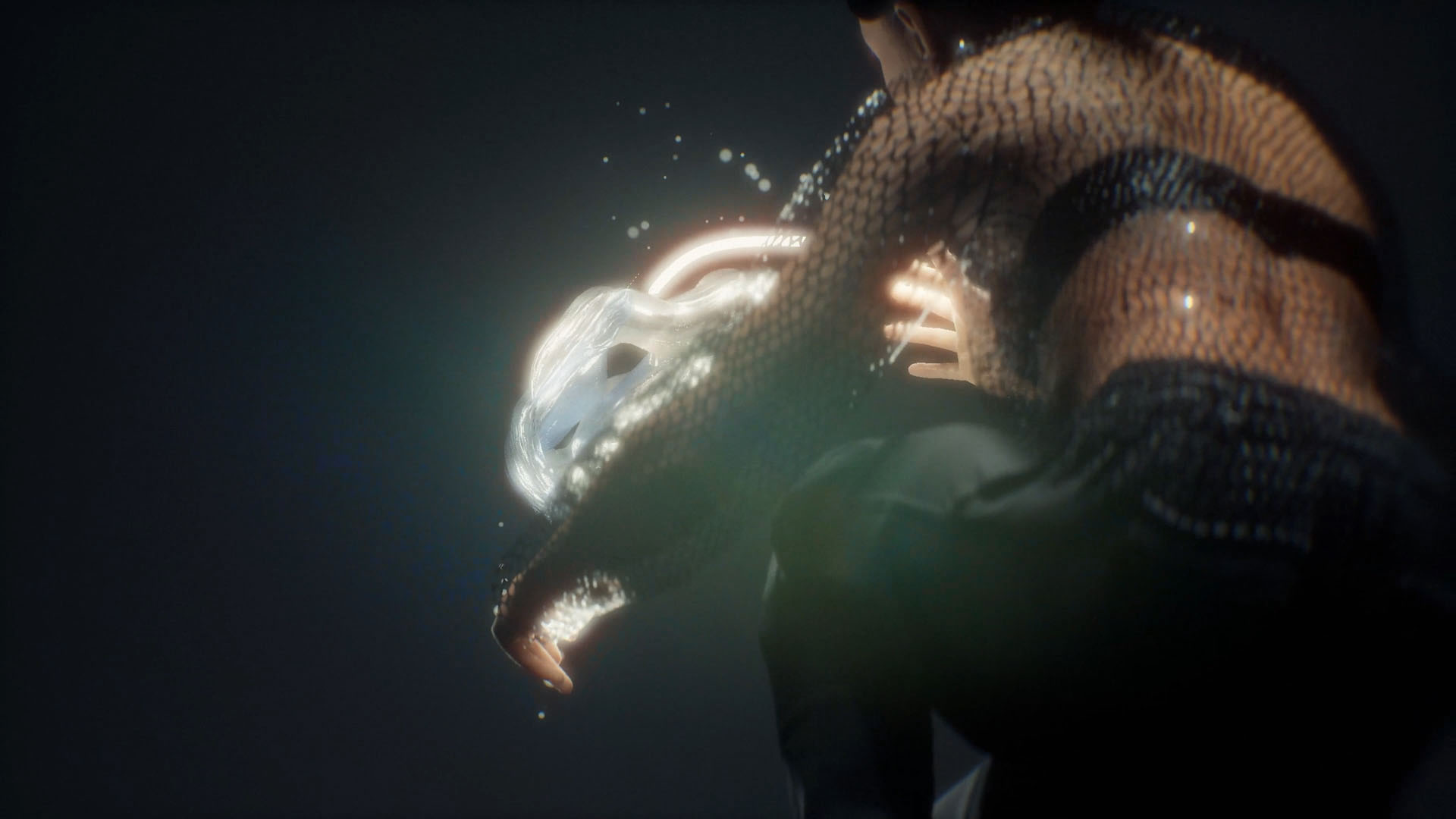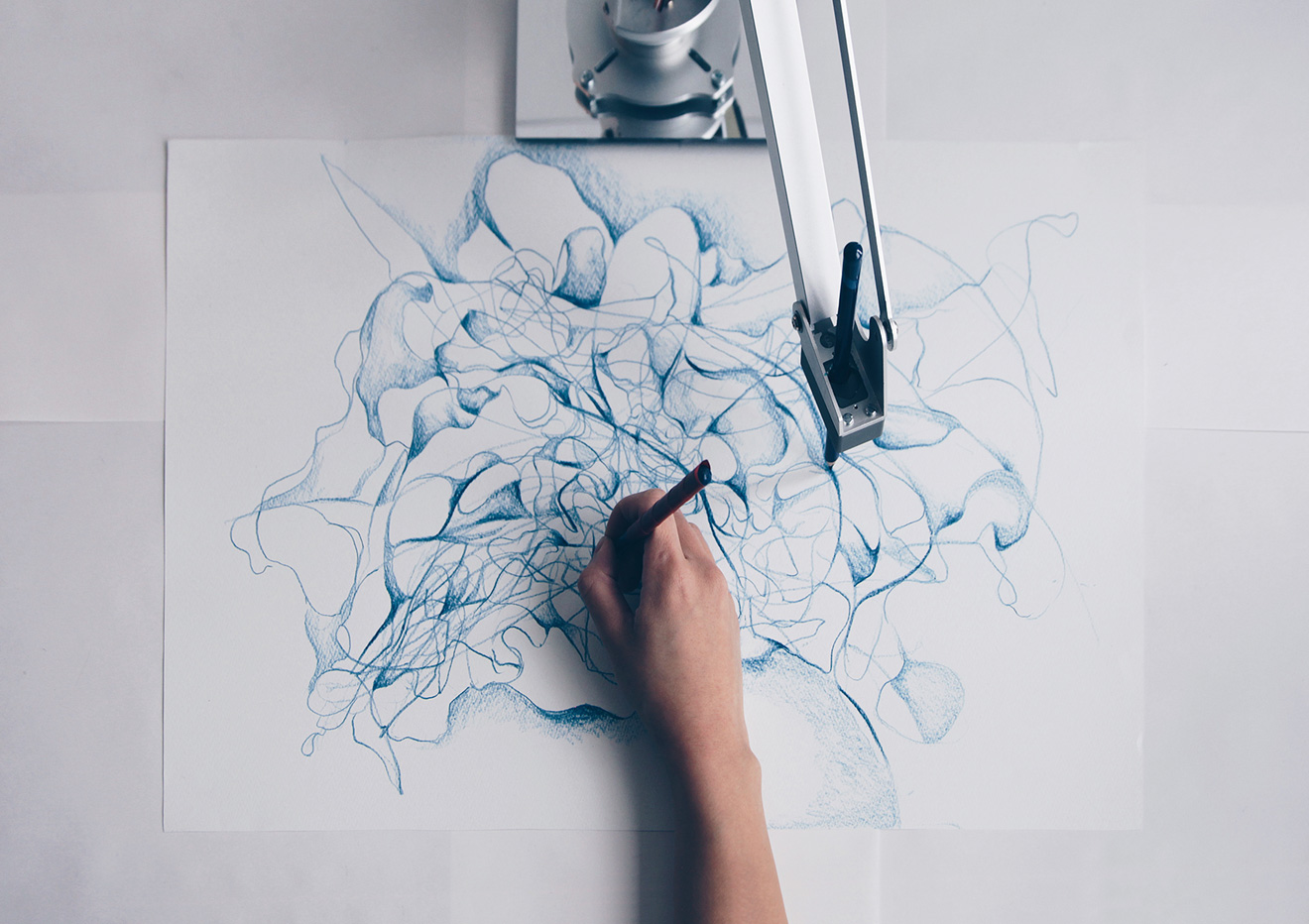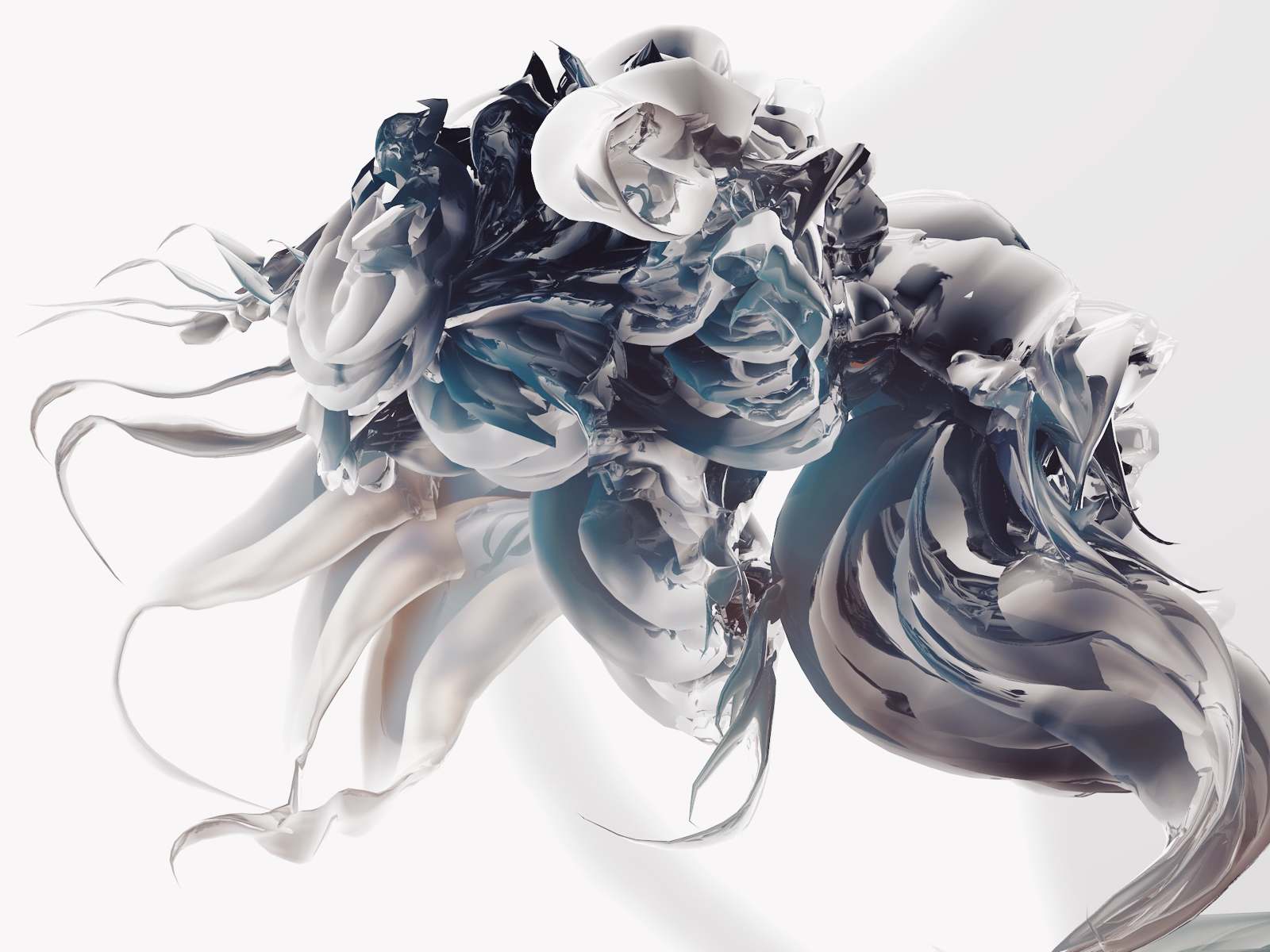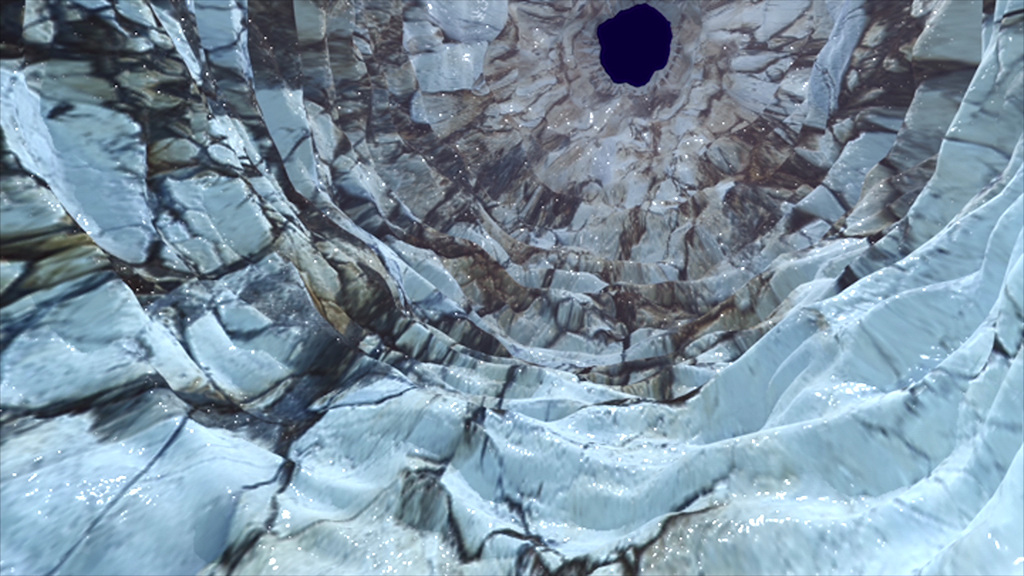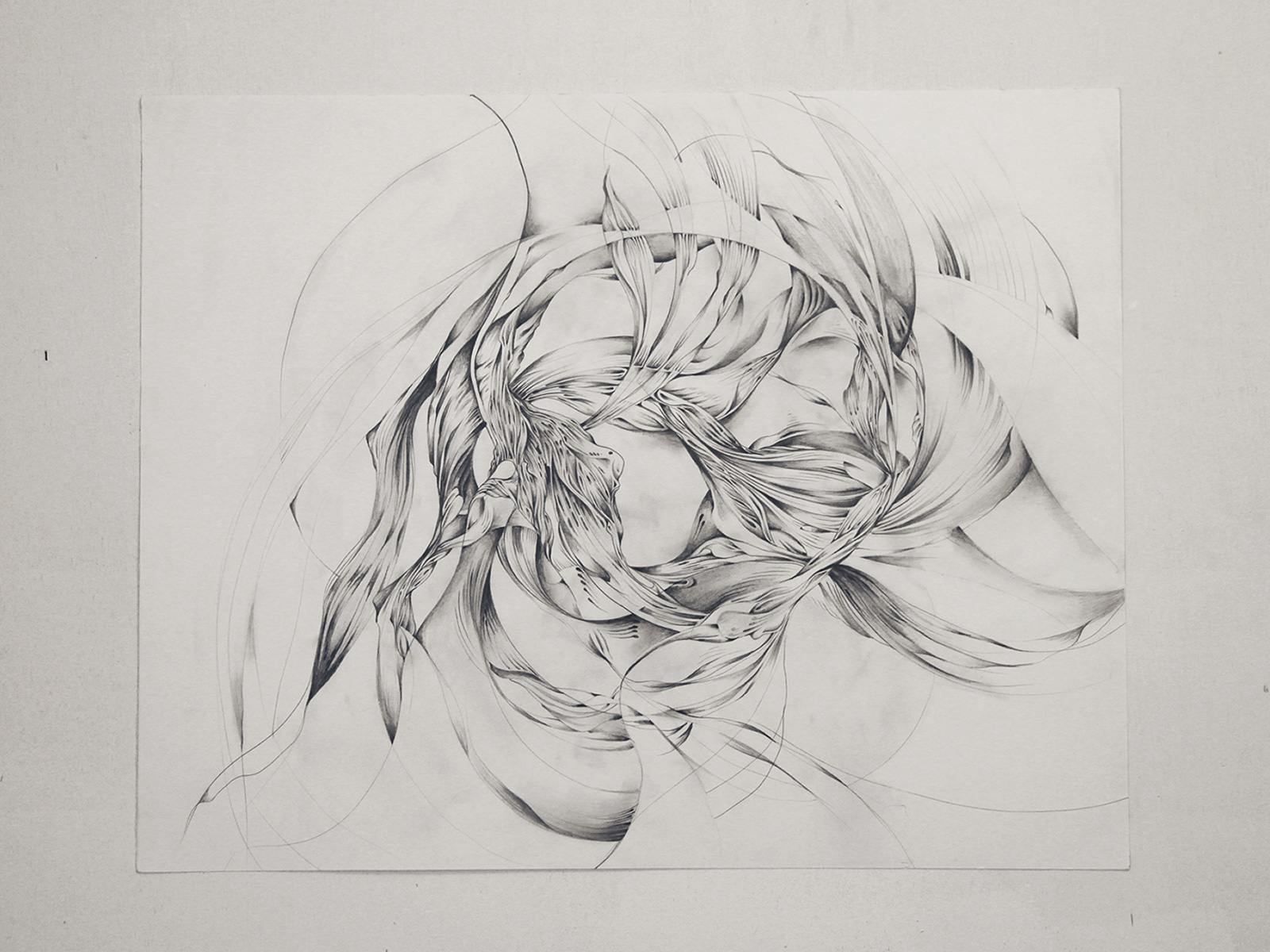Drawing Operations is an ongoing collaboration between an artist and a robotic arm.
The robot mimics the artist's drawing gesture and vice
versa in real time, resulting in a synchronous,
interpretive performance.
This is the first stage of an
ongoing study examining
human and robotic
interaction as an artistic
collaboration.
Collaborators: Sougwen Chung & D.O.U.G._1 (Drawing Operations Unit: Generation_1).
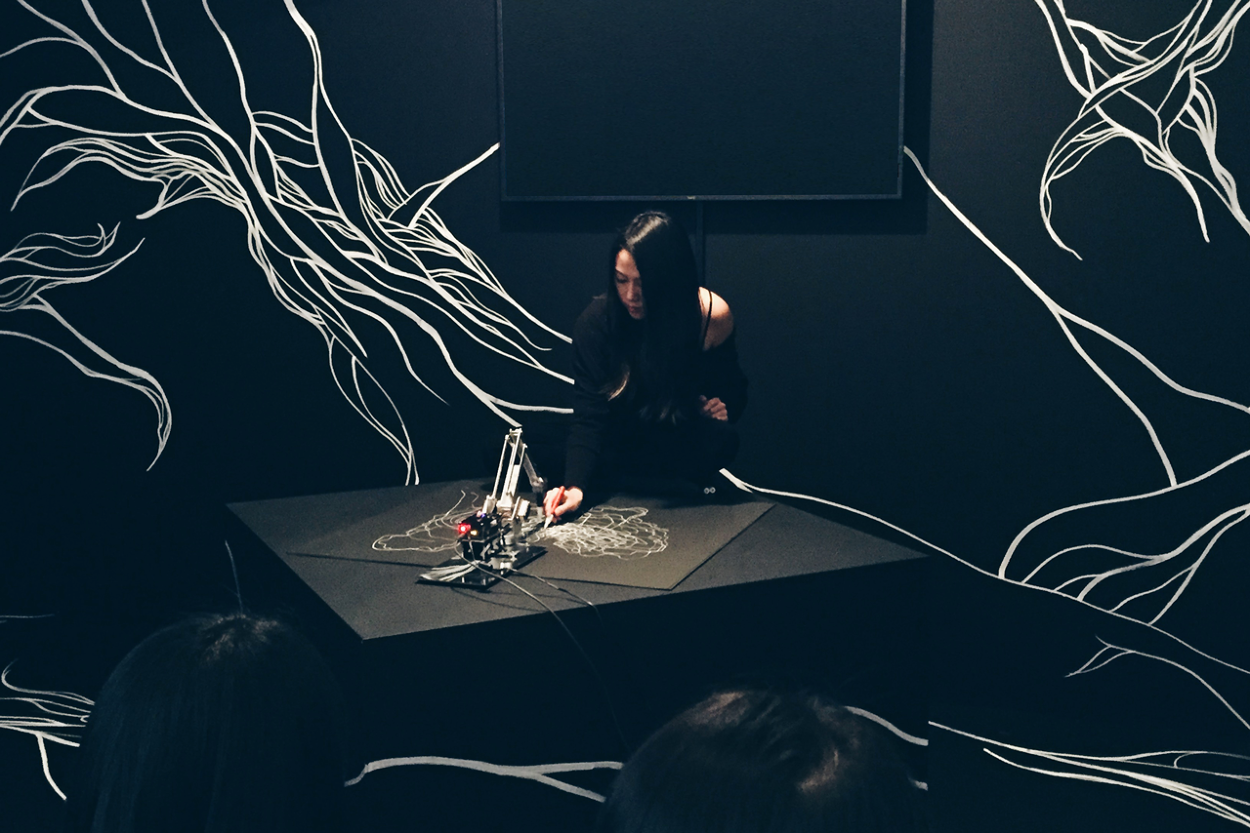
Collaboration is an exercise in behavioral empathy
Collaboration is an exercise in behavioral empathy
Drawing Operations Unit: Generation 1 is the 1st stage of an ongoing study of human and robotic interaction as an artistic collaboration.

Generation 1:
MIMICRY
~

01
01
In Generation_1, the robotic arm mimics the artist’s gesture by seeing through an overhead camera, and analyzing the movement through computer vision software. The result is a synchronicity of movement between artist and machine, captured as a drawing artifact.

02
The following mimicry studies were drawn and performed at The National Art Center in Tokyo, Rebull Studios and the artists studio in New York in 2015 - 2016.
~
~
~
~
~
~

03

04

~
`
~
Exhbition & Performance
Drawing performances are 10 minutes in length. The collaboration is entirely improvised and showcases a process of human & robotic co-creation.
~
~
~

Future Generations
~
~
MEMORY
Exploration of creativity as a combination of learned / remembered gestures from drawing collaboratively and style analysis of artists of the past.
Continuing attemps to evolve D.O.U.G._1's drawing sensibility.
AGENCY
Gestures fromprevious drawings will becollected and saved, existing as a memory bank for D.O.U.G._1. Analysis of visual style of historic artists to translate into gesture, as well as colour palette as a collective memory bank from which robotic arm will be able to select.
"Perhaps it belongs with the avant-garde abstract expressionist movement, under the context of Clement Greenberg’s theory
on medium specificity in which contingency is accepted as aesthetic sensibility. Rather, this collaborative performance
between the body and a robot arm is musical."
The performance is a
process of slowing down,
paying attention, and
communicating entirely
through gesture.
~
~
The robot mimics the artist like a partner in improvisational round singing performance. It is an AI that embraces every glitch, bug, and error. The drawing session, without pre-established harmony, frees itself from aesthetic constraints, while also examining the essence and phenomenon of beauty at the same time.

CREDITS
Sougwen Chung, Artist
In collaboration with
Yotam Mann
Commissioned by
New Inc / New Museum
Redbull Studios New York
New Hive
Thanks
Slanted Studios, Square Fabrication,
Mr. doob, Phil Sierzega, TVRT
READING LIST
Nusselder André. Interface Fantasy: a Lacanian Cyborg Ontology. MIT Press, 2010.
Rich,Adrienne. Arts of the Possible: Essays and Conversations. W.W. Norton & Co., 2002
~
Brockman, John. What to Think about Machines That Think: Today's Leading Thinkers on the Age of Machine Intelligence. Print.
~
Varela, Francisco, and Humberto Maturana. Autopoiesis and Cognition The
Realization of the Living. 1st ed. D. Reidel, 1980. Print.
Kurzweil, Ray. How to Create a Mind: The Secret of Human Thought Revealed.
New York: Viking, 2012. Print.
SELECTED PRESS
Interview with Maddy Varner- New Hive
NEW INC Showcase: Sougwen Chung for Redbull Studios New York
To learn more about the body of work, please visit the Press section.
For booking inquiries, please contact office@scilicet.xyz
For official press images, go here
works by sougwen

